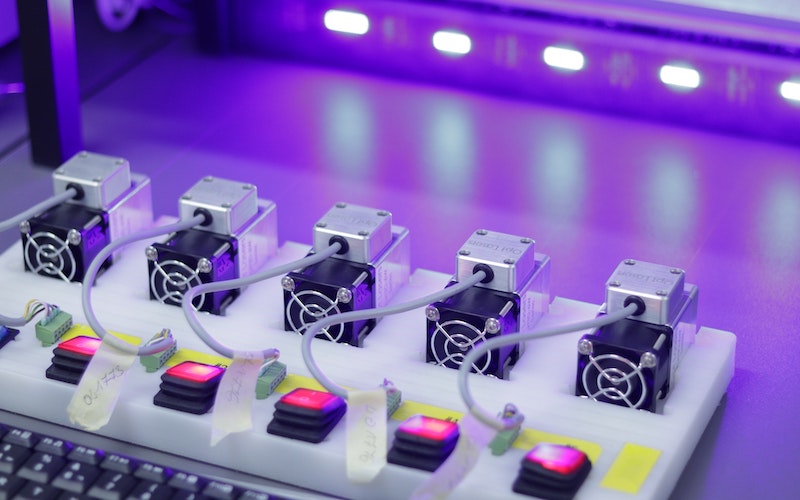
In the ever-evolving landscape of modern manufacturing, computer numerical control (CNC) machining stands as a revolutionary force, shaping intricate designs with unparalleled precision and efficiency. The staggering size of the worldwide CNC machine market as of 2021—USD 83.99 billion—reflects the enormous significance of the technology across a variety of sectors.
In this blog article, we explore the impressive possibilities of CNC machining and delve into how it helps create intricate patterns that were previously thought to be impractical to produce using conventional techniques. CNC machining is a driving force enabling artists, engineers, and designers to translate their thoughts into attainable realities, from the world of 2D patterns to intricate 3D sculptures.
Understanding CNC Machining
CNC machining is a manufacturing process that relies on computerized controls to operate machine tools. The machines are programmed with precise instructions to cut, shape, and craft materials into intricate designs. Unlike manual machining, CNC machines follow strict codes, resulting in enhanced accuracy and repeatability. The heart of CNC machining lies in its ability to execute complex movements and operations with ease, enabling the creation of intricate designs with remarkable efficiency.
Challenges and Considerations
The availability and caliber of CNC machining services are among the crucial factors to take into account while venturing into the area of sophisticated designs. The need for specialized CNC machining services that can meet specific design requirements develops along with the need for precision and complexity. The success of a project may be significantly impacted by choosing the correct CNC machining service provider since their knowledge, tools, and skills are essential to reaching the necessary level of complexity.
Service providers will probably adapt their products as the market grows to match the rising demands of various sectors and design problems.
Versatility of CNC Machining in Crafting
The field of 2D designs is where CNC machining excels as a flexible tool. Artists and designers may now engrave complicated patterns, motifs, and designs with astounding accuracy on a variety of materials. From delicate wooden filigree to intricate metal engravings, CNC machines open up new possibilities for detailed 2D designs that were once arduous to achieve manually.
Stepping into the realm of 3D designs, CNC milling takes center stage. With multi-axis capabilities, CNC milling machines can sculpt complex 3D models with stunning accuracy. Architects and artists can now create intricate sculptures and structures that push the boundaries of creativity. The ability to work in multiple axes allows for smooth transitions and seamless contours, resulting in awe-inspiring designs.
Multi-Axis Machining
Multi-axis CNC machines are another advancement that further expands the horizons of intricate designs. Traditional 3-axis machines can move in three directions (X, Y, and Z), but multi-axis machines add rotational movements, allowing for more complex cuts and shapes. This technology is particularly valuable in crafting complex geometries and organic forms that demand a higher level of intricacy.
Prototyping and Iteration
The iterative nature of CNC machining is instrumental in refining intricate designs. Artists and engineers can create prototypes swiftly, enabling them to visualize and improve their creations. By making adjustments based on physical prototypes, creators can fine-tune the designs to achieve the desired level of intricacy.
Materials for Intricate Designs
CNC machining’s capabilities extend across various materials, each presenting unique challenges and opportunities for intricate designs.
Wood, with its natural beauty and versatility, is a popular choice for CNC carving. It allows for the creation of intricate wooden patterns, intricate furniture detailing, and even art pieces that highlight the wood’s grain and texture.
Metals are no exception to the magic of CNC machining. Precise metal machining enables the creation of intricate metalwork, jewelry, and engineering components. CNC machines can shape metal alloys with unparalleled accuracy, ensuring that even the tiniest details come to life.
Plastics also play a significant role in crafting intricate designs. Whether it’s creating complex molds or fashioning unique plastic accessories, CNC machining allows for intricate detailing that elevates plastic creations to a new level.
Software and Tools for Designing Intricate Projects
To unleash the full potential of CNC machining, powerful CAD and CAM software are indispensable. Computer-aided design (CAD) software provides the platform for creating intricate designs with precision and ease. It allows designers to visualize their ideas and convert them into digital representations that CNC machines can interpret.
Computer-aided manufacturing (CAM) software, on the other hand, translates CAD designs into machine-readable instructions. It generates toolpaths, optimizes cutting strategies, and ensures that intricate designs are flawlessly translated into tangible objects.
Conclusion
When it comes to creating complicated patterns, CNC machining has completely changed the game. The universe of creative possibilities has been opened up by its accuracy, adaptability, and efficiency, enabling designers, engineers, and artists to realize even the most complex of dreams. We can only speculate about CNC machining’s seemingly endless potential to influence the direction of design and manufacturing as technology develops. Embrace the power of CNC machining, and let your creativity know no bounds.
Cover Photo by Opt Lasers from Poland
